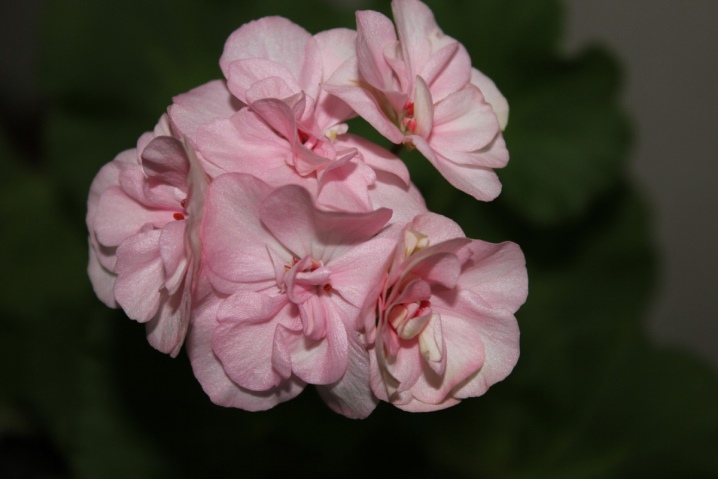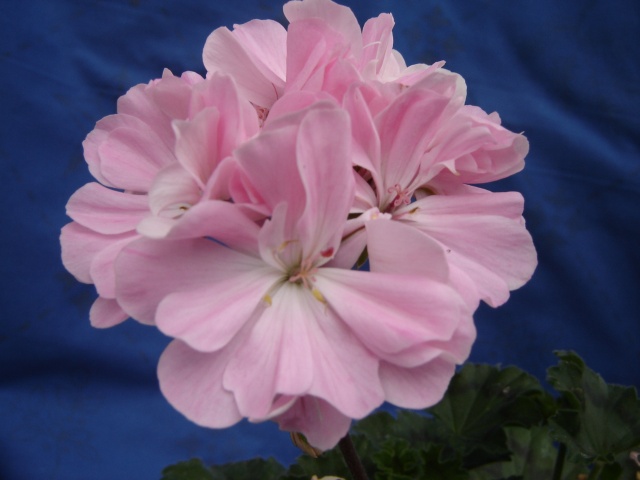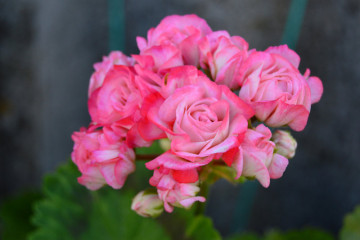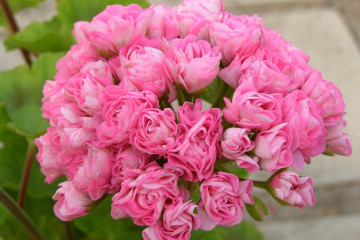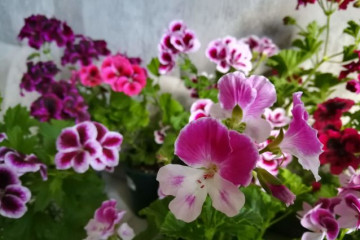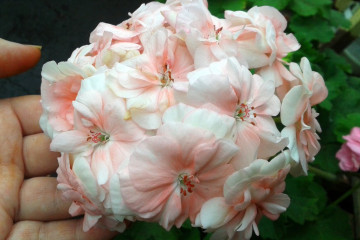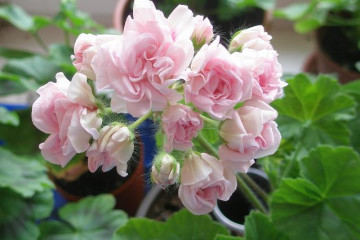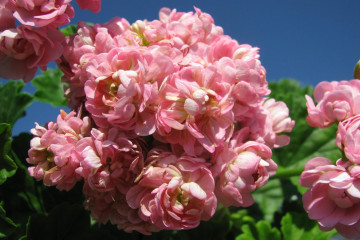Pelargonium Odensio Symfonia (Odensjo Symfonia) - description
Content:
Pelargonium is most commonly associated with Geranium. Although the flowers belong to the same family, they are different in kind and cannot be crossed. Pelargonium appeared in the southern regions, and her named sister - in the northern ones. Not the origin itself, but differences in grooming preferences are important when breeding geraniums or pelargoniums.
The history of the appearance and description of the Odensjo Symfonia pelargonium (Odencio Symphony)
Pelargonium Odencio Symphony appeared in the Swedish kennel Rockdala. A characteristic feature of the standard is the deep pink color of tight inflorescences. Leaves are densely doubled.

The difference between flowers can be seen in the leaves and inflorescences, only the seed pods are similar
Other popular varieties of pelargonium from the Odensjo series
Symphony Pelargonium has a number of varietal representatives, among which you can choose a plant by color and type of flowering. The most popular varieties:
- Sound of Silence. Pelargonium Odencio of the Sound Silens species grows slowly, the bush is compact, and the flowers are distinguished by a delicate white color with a greenish tint. The crop should be watered carefully because it has a small root system.
- Suzie Wong. Susie Wong differs from the Odencio standard in a deeper and more saturated pink color of the terry petals.
- Rodluvan. It has bright red flowers, shrubs well, does not require frequent pruning. The variety is characterized by voluminous inflorescences, which makes it luxurious.
- Bernadette. One of the most delicate flowers of light pink pastels. The plant is a dwarf species.
- Hummingbirds Egg Butterfly. A subspecies with an intricate name attracts attention with a juicy lilac-pink color. Large flowers contrast with variegated green leaves.
- Ice Frozen Campari. Zonal pelargonium stands out with lilac flowers, which are complemented by bright blotches on the petals and core.
- Lynn Palmer. The flower is convenient for growing in pots. The petals are semi-double with a color gradient from white to purple and green.
- Madame Bovary. Bovary attracts attention with an expressive bright red color. Inflorescences are collected in large bouquets.
- Stilla Flirt. The smallest and most graceful of the Odensio varieties. The pale pink color recalls the gold standard of this type of pelargonium.
Planting a flower
When growing a flower in a garden, you need a nutritious soil with an admixture of clay. For the potted version, use a mixture of peat and sand.
Odencio Pelargonium Care
The best temperature for a plant is around 20 degrees Celsius. The flower does not need to be sprayed. It is important to keep watering in moderation and use drainage.
Flower propagation
The plant is bred using cuttings, on which there are at least 3 leaves when pruning. For small and dwarf species, the cutting height should be up to 4 cm, for tall ones - up to 7 cm.
Diseases and pests, the fight against them
The flower is quite resistant to diseases and not capricious. The most common reasons for poor culture are:
- improper watering or air humidity;
- virus infection;
- attacks of ticks, aphids and caterpillars;
- bacterial infections.
The main way to prevent problems is timely care and attention, and treatment is carried out by carefully removing diseased leaves. New shoots will appear in their place.
Odensjo Symfonia Pelargonium is distinguished not only by its amazing flowers, which can delight almost the whole year, but also by its original aroma. An unpretentious and at the same time beautiful flower was a favorite of aristocrats in the 18th century.
